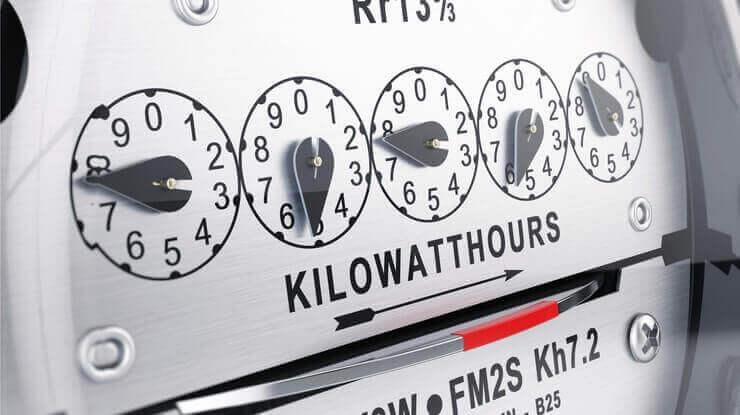A kilowatt-hour is a unit of measure for using one kilowatt of power for one hour. Just knowing what a kilowatt-hour is and what it can power can save you money on your electricity bill.
Once you understand what is a kilowatt-hour, you can monitor electricity usage, make educated choices about saving energy, and lower your monthly electric bill.
Bạn đang xem: What Is A Kilowatt-hour (kWh) And What Can It Power?
What is a Kilowatt-Hour?
A kilowatt-hour, otherwise known as a kWh, is a way to measure how much energy you’re using. It’s not the number of kilowatts you’re using in an hour, even though that seems to make sense.
A kWh equals the amount of energy you would use by keeping a 1,000 watt appliance running for one hour.
For instance, if you turned on a 100 watt bulb, it would take 10 hours to use one kilowatt-hour of energy. A 2,000 watt appliance, on the other hand, would only take half an hour. It all comes down to dividing the number of watts in an appliance into 1,000.
Kilowatt-Hour vs. Kilowatt
What Can 1 Kilowatt-Hour Power?
Each item in your home will use a different amount of power. Here are some examples of what 1 kWh can power:
- Running a dishwasher (1,000 watts): 1 hour
- Watching a 50″ LED TV (50 watts): 20 hours
- Cooking in the oven (2000 Watts): 30 minutes
- Running the refrigerator (300 Watts): 3 hours
- Using a Playstation 4 (150 Watts): 6.66 hours
How do I calculate what 1 kWh will power?
- Locate the wattage for the device.
- Convert the wattage from watts (W) to kilowatts (kW). To do that, just divide the number of watts by 1000.
- Divide the number of kilowatts into 1kWh to see how long it takes for your device to use 1 kWh.
Here it is in a formula:
Watts / 1000 = Kilowatts (kW)
1kWh/Kilowatts = number of hours for a device to use 1kWh
How Many Kilowatt Hours (kWh) Do Common Appliances Use?
Obviously, every appliance in your home will use a different amount of power. And instead of looking at what you can do with a single kWh, it makes more sense to look at appliance electricity usage under typical circumstances.
Here are examples of the number of kilowatt-hours common household items use:
- 50″ LED Television: around 0.016 kWh per hour
- Electric dishwashers: around 2 kWh per load
- Electric water heater: 380-500 kWh per month
- Refrigerator (24 cu. ft frost free Energy Star): 54 kWh per month
- Clothes Washer (warm wash, cold rinse): 2.3 kWh per load
- Clothes Dryer: 2.5 – 4.0 kWh per load
- Air Conditioner (3 ton 12 SEER): 3.0 kWh per hour
The Energy Guide label on newer appliances will include the estimated yearly electricity usage. Multiply that by your rate per kilowatt-hour and you have the cost to use that device.
How Do I Calculate How Many kWh an Appliance Uses?
Your appliances account for around 25% of your electric bill. That includes your water heater, refrigerator, freezer and washer and dryer. You can easily calculate the number of kilowatt hours an appliance uses following these steps.
Examples: How to Calculate Electricity Usage
Xem thêm : दशहरा पर 10 वाक्य (10 Lines on Dussehra in Hindi)
Here are some examples of calculating electricity usage of some of your appliances. We’ll start with a simple example, then a more complex one.
Use A Calculator Tool to Calculate Energy Usage
Or make things easy for yourself and use the energy usage calculator as a short cut:
There are also several online resources and calculators that can help you with this, if you prefer that to pen, paper and calculator! Or create a spreadsheet to help you on this project.
Additional Resources: What Appliances Use the Most Electricity
How Many kWh Does a House Use Per Day?
One common question is, how many kWh does a house use per day? The amount of kWh you use will depend on:
- How big your residence is (square footage)
- The age of your home (which impacts your insulation, roofing materials and type of window)
- The number of people living there
- The type, number and age of appliances
- How you heat or cool your home
- Whether you have a pool
- The climate you live in
According to the EIA, in 2021, the average annual electricity consumption for a U.S. residential home customer was 10,632 kilowatt hours (kWh), an average of 886 kWh per month. That means the average household electricity consumption kWh per day is 29.5 kWh (886 kWh / 30 days).
Customers in some areas, like Texas, consume even more. The average annual household electricity consumption for a Texas home is 14,112 kWh. That’s 36% higher than the national average. Find out more about the average electricity bill in Texas with our article on that topic!
Other Measures of Electricity: Amps, Ohms, Volts and Megawatts
Watts, kilowatts and kilowatt-hours are the measures of electricity you most commonly hear in US households. Here are some other common measures of electricity:
- Amp: an amp, short for ampere, is one unit of constant electrical current
- Volts: a volt (V) is a unit of electrical potential. Voltage is the potential for energy to move.
- Ohms: a measure of electrical resistance.
- Watts: a watt is a measure of power consumption.
Nguồn: https://nanocms.in
Danh mục: शिक्षा
This post was last modified on November 18, 2024 11:59 am

